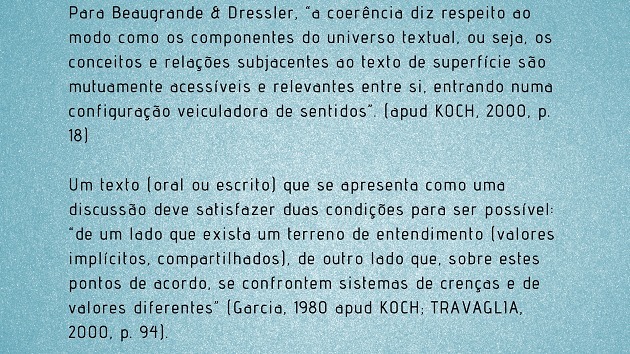What is a seminar?
The seminar is a textual work genre in which a theme is presented orally. It is usually done by a group of students and this type of work is also very common to be done in college.
Similar to a written work, it should appreciate the good presentation and connection of the ideas presented.
How to do a seminar?
To set up a seminar, we must follow the steps:
- To better understand the subject, doing a lot of research on the subject;
- Define which parts should be the introduction, development and conclusion. This is because a seminar must have a well-defined narrative;
- Separate each part of the theme and better define which person will be responsible for presenting each one.
Nowadays, the seminar is accompanied by PowerPoint-style presentations, where you can choose the background of the slide, according to the theme, insert images, videos, etc.
When making this presentation, it is essential to understand the narrative that is being constructed and that will be presented to the audience.
At the end, a discussion is usually opened with the public, who can ask questions or add some comments.
What is the structure of a seminar?
To set up a seminar, we must understand that its structure basically follows the steps of a written text, that is, it must have a beginning, middle and end.
1. seminar introduction
The introduction of a seminar can present a type of summary that will make it easier for the listener and for those who are presenting as well. In the form of topics, the topic can be divided into parts, better clarifying everything that will be covered, that is, which points about the topic will be covered in the presentation.
This form will help to build the narrative better, while demonstrating the organization of thought.
Sample Summary:
- Definition of collaborative consumption;
- Culture of ownership x culture of access;
- Collaborative economy systems;
- Role of social media;
- Impacts of the collaborative economy;
- Conclusions.
Of course, there are other ways to start a seminar introduction, for example by inserting a definition about the central research topic.
Definition example:
Definition of collaborative consumption
Socioeconomic model built through the sharing of human and physical resources.
2. seminar development
In the development part of the seminar, some questions about the theme are raised. This, without a doubt, will be the biggest part of the work.
Here, each of the points of the introduction should be clarified and explained through data, examples, etc.
It is very important that each part is well studied and elaborated. For this reason, researching the topic well beforehand is essential for the work to be more consistent.
Example:
Ownership culture vs. access culture
Collaborative consumption can be considered as a culture of access (where everyone can enjoy experiences) as opposed to a culture of possession.
Note that, in this part, the use of images and short videos can facilitate the listener's understanding, better illustrating what is being presented in the seminar.
3. Seminar conclusion
Every seminar must present a closure of the theme, a conclusion of what was studied. It is very important to connect all the ideas related to the topic and present a conclusion about what was said.
In this case, it can be a consideration that was arrived at by researching the researched topic, or even asking a final question to open a discussion with the public.
Completion example:
The collaborative economy appears on the horizon for all of us as a potential opportunity, whose people involved coordinate the processes of acquisition and distribution of goods and services.
And the bibliography of the work?
Even though it is not part of the structure of the seminar, it is essential to present at the end of the work the sources that were consulted for the development of the work. This can also be done on a final slide.
Bibliography example:
BOTSMAN, Rachel; ROO, Rogers. What's mine is yours: How collaborative consumption will change our world. Translation by Rodrigo Sardenberg. São Paulo, Bookman: 2011.
Shared Economy: Opportunities for Small Businesses. / Cuiabá, MT: Sebrae, 2017.
Be sure to cite the works in the ABNT rules model, which demonstrates the care that the presenter (or group) took.
Learn more about it at ABNT bibliographic references: how to do it?
How to present a seminar?
Below are some tips for presenting a great seminar.
1. train the presentation
It is very important to practice the presentation at home to better understand if something should be improved. For this, the presentation can be made to family and friends.
This will also help you realize how much time it will take for the presentation, as this type of work has a time limit.
2. Make a summary guide
Making a summary is an important tip so that you don't forget anything when presenting. It can be done by hand, in the form of a summary or in the form of topics.
understand better in How to make a summary? Essential Tips (with examples)
3. prepare to speak in public
For those who have more difficulties in public speaking, the presentation should be practiced several times. This will make you more confident when speaking.
Some essential tips are:
- always look at the audience when speaking;
- present the work in a formal language that is at the same time clear and objective.
The best way to give a good presentation is to study hard and be sure what you're talking about.
know more about:
- Expository Text
- Textual genres

